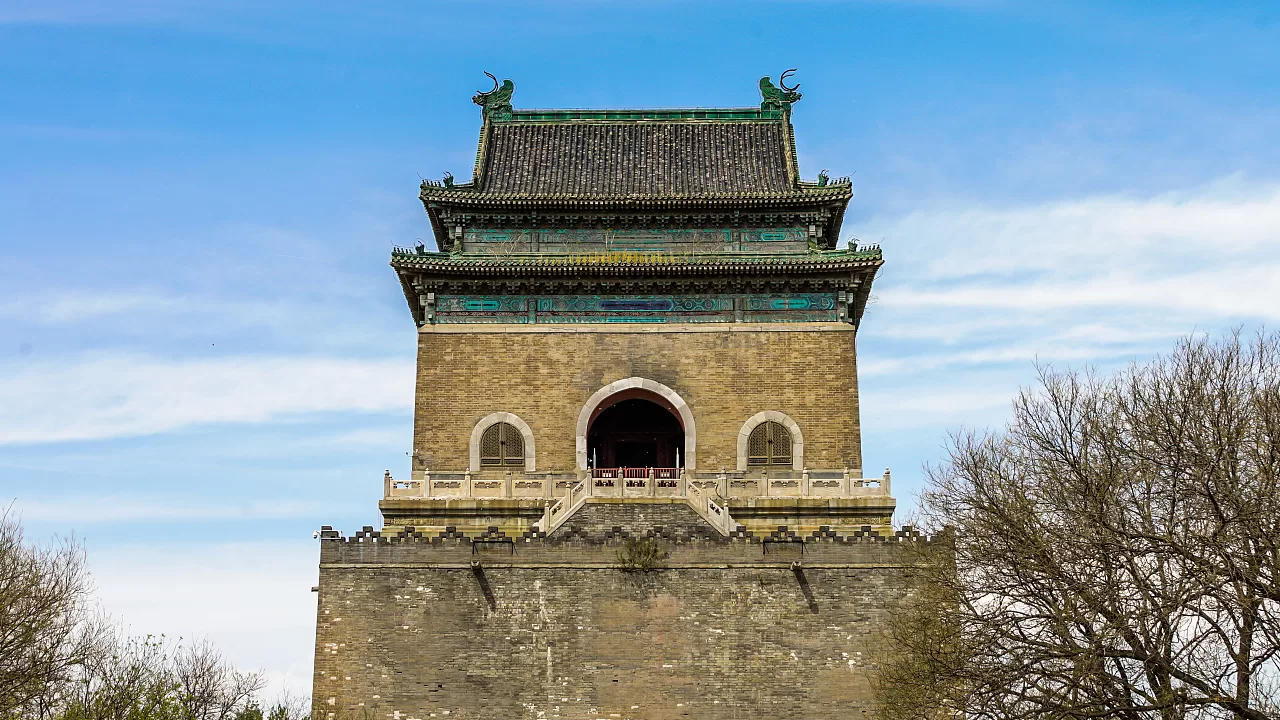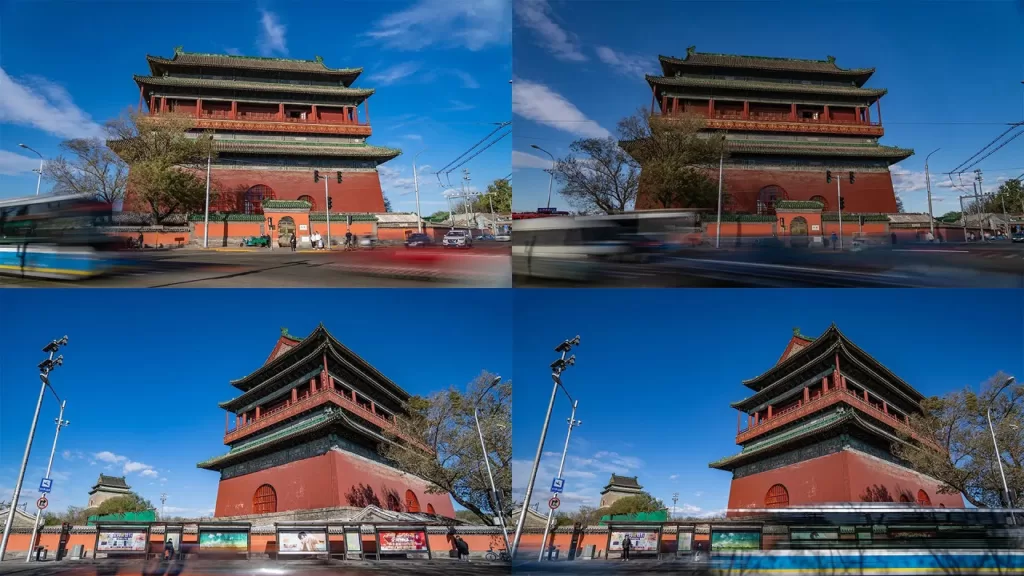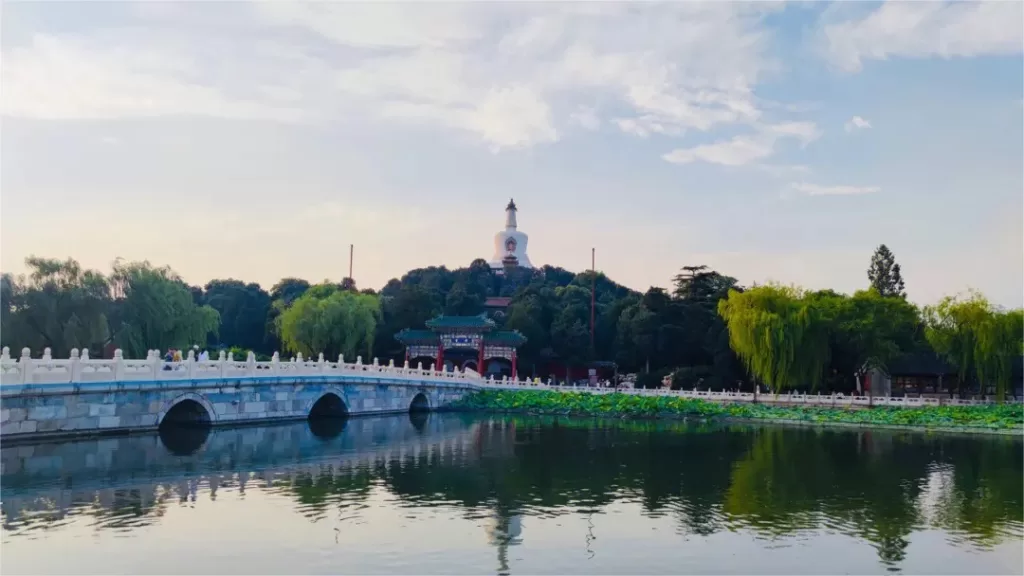The Beijing Bell Tower (北京钟楼) is an iconic landmark and historical monument located in the heart of Beijing, China. Built during the Ming Dynasty, the Bell Tower stands at the northern end of the city’s central axis and was once used to tell time and signal important events.
The structure is a beautiful example of traditional Chinese architecture, featuring a brick frame and sloping tiled roof. The tower stands at 47.9meters tall and is divided into two levels, each adorned with intricate carvings and decorations.
Visitors can climb to the top of the tower and take in panoramic views of the surrounding city. Inside, the tower houses an exhibition of ancient bells, some of which date back to the Ming Dynasty. The Bell Tower is also famous for its nightly light and sound show, which showcases the history and culture of Beijing.
Today, the Beijing Bell Tower remains a symbol of the city’s rich cultural heritage and is a popular destination for tourists and locals alike.
Table of Contents
- Basic Information
- Location and Transportation
- HIghlights of Beijing Bell Tower
- Vlog about Beijing Bell Tower
- Attractions near the Bell Tower
- Explore Beijing Like A Local
Basic Information
| Estimated Length of Tour | Less than a hour |
| Opening Hours | 8.30 – 18.00; Last admission: 17.30 |
| Ticket Price | 15 RMB |
Location and Transportation
The Bell Tower is located in the central part of Beijing, in the Dongcheng district, and is easily accessible by public transportation. The specific address is No. 9 Zhonglouwan, Dongcheng District, Beijing, China.
Bus: Take bus 82 or 135, get off at Drum Tower Stop (鼓楼,Gulou), and walk about 100 meters to the north to reach the Bell Tower.
Subway: Take subway line 8, get off at Shichahai Station, and Walk about 200 meters to the north to reach the Bell Tower.
HIghlights of Beijing Bell Tower
Architectural Style

The Beijing Bell Tower is a stunning example of traditional Chinese and Muslim architectural styles. The base of the tower is a square-shaped platform made of white marble, while the wooden upper structure features a double-eaved hip-and-gable roof. The tower’s façade is adorned with intricate carvings and colorful glazed tiles, adding to its beauty and grandeur. The tower also features a series of brackets, brackets arms, and flying eaves, which are common features of traditional Chinese architecture. The combination of these elements creates a unique and impressive architectural style.
The Ancient Bell

The bell in the Beijing Bell Tower is a magnificent bronze artifact that weighs over 60 tons. It was cast during the Ming Dynasty (1368-1644) and is considered to be one of the largest and heaviest bells in China. The bell is approximately 7.02 meters in height, with a diameter of 3.3 meters, and is adorned with intricate carvings and inscriptions. The bell was used to announce the time of day and to warn against enemy attacks and fires.
Panoramic Views

The Beijing Bell Tower offers visitors stunning panoramic views of the surrounding area. From the top of the tower, visitors can enjoy a 360-degree view of the city, including the nearby Drum Tower, the Forbidden City, and other famous Beijing landmarks. The view is particularly breathtaking during sunset when the sky is filled with a beautiful array of colors. Visitors can take in the cityscape while standing on the tower’s wooden balconies, which offer unobstructed views in all directions.









Drum Tower with Grey Walls and Green Tiles
1. The first floor features a Dragon Culture themed exhibition (February 18, 2024 – June 5, 2024).
2. The Drum Tower stands at 47.9 meters and to reach the second floor, one must climb nearly straight up and down 75 steps of stone stairs to admire the 63-ton ancient clock.